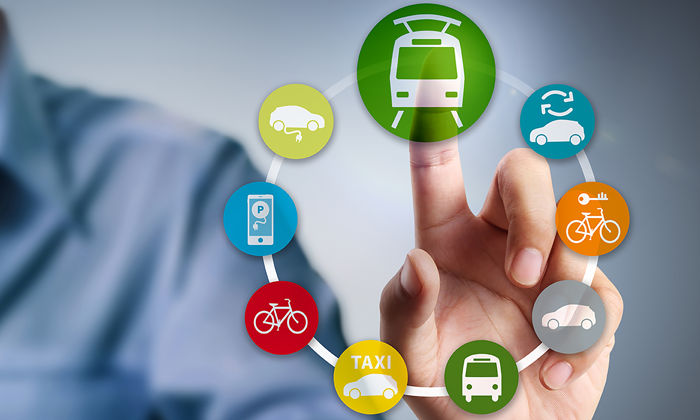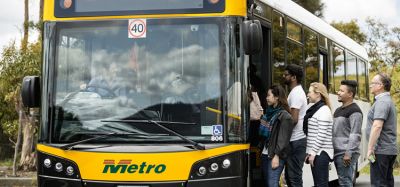Hanover´s ‘one stop mobility shop’
- Like
- Digg
- Del
- Tumblr
- VKontakte
- Buffer
- Love This
- Odnoklassniki
- Meneame
- Blogger
- Amazon
- Yahoo Mail
- Gmail
- AOL
- Newsvine
- HackerNews
- Evernote
- MySpace
- Mail.ru
- Viadeo
- Line
- Comments
- Yummly
- SMS
- Viber
- Telegram
- Subscribe
- Skype
- Facebook Messenger
- Kakao
- LiveJournal
- Yammer
- Edgar
- Fintel
- Mix
- Instapaper
- Copy Link
Posted: 17 October 2017 | Martin Röhrleef | No comments yet
One of the world’s first examples of Mobility-as-a-Service (MaaS) went live in Hanover in 2016: a multimodal mobility shop jointly run by PTO ÜSTRA Hannoversche Verkehrsbetriebe AG and Greater Hanover Transport Association (GVH). In this article for Intelligent Transport, Martin Röhrleef, ÜSTRA Hannoversche Verkehrsbetriebe AG, shares some insight into the fundamentals of this pioneering operation and reflects on what can be achieved in the future for MaaS.


AT its core, the mobility shop is an integrated workflow that encompasses registration, routing, booking, and billing for several transport modes – public transport, taxis, station-based and free-floating car-sharing. In essence, this multimodal mobility shop provides a forward-looking basis for public transport to become a full MaaS provider in the Hanover region. Nevertheless, it is clear that continuous development with more services and fundamental enhancements to usability is needed in order to survive in the emerging world of competitive platforms and MaaS providers.
A digital tsunami is coming to the transport sector, and with it comes new services, new participants and new business models.
Consequently, Mobility-as-a-Service (MaaS) will be a key element in the future, as it becomes necessary to integrate and bundle the ever-increasing number of services in a customer-oriented manner. Beside the difficulties this will entail, it is good news for public transit as it provides myriad opportunities: the business model of MaaS (’selling rides instead of vehicles’) is very close to that of public transport. Given this fact, it is very likely that – at least in metropolitan areas – easy access to an array of different services will trump car ownership for a significant share of the population. A diverse range of public transportation services with mass transit as a backbone appears to be the future model.
ÜSTRA as a forerunner
ÜSTRA Hanover is one of the public transport companies that are anticipating and spearheading this development. In 2004, it launched the first bundled multimodal offer in Germany (HANNOVERmobil), which gained a lot of national and international attention.
HANNOVERmobil was designed as an add-on to the annual public transport pass and included a membership for car-sharing, a BahnCard (25 per cent fare reduction for German rail) and discounts on services such as taxi, rental cars, delivery services and bike shops. In terms of effects on modal behaviour and car-ownership, the results per capita were quite good: users increased their use of public transport and bicycling, and approximately 50 per cent of them abandoned their private car or skipped their intention to buy one. However, overall market success was quite limited, as only 1,300 customers took up this offer.
Multimodal mobility platform and shop
As a consequence, the main challenge for the new generation of MaaS and HANNOVERmobil was to address a much broader user group by lowering the entrance barrier and providing greater flexibility. An additional consideration was the long-held plans to introduce electronic ticketing into Hanover’s public transport system.
The chance to combine both approaches in a single project came when Hanover’s metropolitan region became part of a national funding scheme called ‘Showroom Electric Mobility’. The premise was, rather than creating a ‘public transport only’ electronic ticket shop, ÜSTRA jumped straight to the next level and created a full multimodal mobility shop. Thus, every element (registration, routing, booking and billing) would not be limited to public transport but also include additional services.
In partnership with Volkswagen and cantamen GmbH (a Hanover-based car-sharing software company), ÜSTRA developed the idea of a ’mobility platform for the metropolitan region’ in 2013 and finally became the leader of this project.
Taking into account the very different backgrounds and approaches of a local public transport operator and a global OEM (original equipment manufacturer) – ÜSTRA wanted to set up a long-term solution while Volkswagen’s approach was more experimental – it was clear that collaboration was only possible for a limited time and within a limited scope. The solution was a decentralised system, with both ÜSTRA and Volkswagen developing their front-ends as well as their back-end platform system in partnership with cantamen. ÜSTRA’s focus was to integrate the more transit oriented services like taxi and car-sharing, while Volkswagen’s was the integration of more car-oriented services like parking and charging. Both platforms would be interlinked by a roaming system.
The end of the funding period resulted in continuation of the ÜSTRA-platform while the VW-part and roaming-function were discontinued.
Flexible and user-centric concept
With the aim to make use of all the systems developed within the funding project, ÜSTRA now provides a ‘one stop mobility shop’ for the Greater Hanover Region and the transport association GVH. The shop is based on public transit but also incorporates car-sharing, taxis and other services.
The mobility shop is completely integrated into the web and app service of public transport in the Greater Hanover Area.
The membership including basic access to all multimodal services is completely free of charge in order to keep the entrance barrier as low as possible. The starting point for customers is the joint registration (single sign on): once they have entered their personal data for public transport ticketing, they can register to use additional multimodal services by simply ticking additional boxes. In this way they can customise their contract by selecting the range of services (selection of public transport, car-sharing, taxi, etc.), tariff levels (e.g. single tickets or annual pass for PT; basic tariff or heavy-user-tariff for car-sharing) or subscribe to a whole ‘mobility bundle’, like HANNOVERmobil.
Waiving all subscription and registration fees for the basic tariffs enables easy testing of new mobility services, just by clicking an extra box. If customers want to use a particular service more frequently, they can upgrade to another tariff-level (e.g. annual pass for public transport or HANNOVERmobil for multimodal services). The shop is flexible and modular, so that further modes and services like bike-sharing, parking or ride-pooling can easily be incorporated. Compared to other mobility platforms, the ‘self-customising’ feature and flexibility are USPs.
The shop-functionality also integrates routing, booking, access and billing within a single process for the customer. If the customers choose ‘multimodal routing’, they will receive information about costs and the duration of a trip by various transport modes. After ticking the preferred mode, they can either buy their mobile public transport ticket online, make a reservation for car-sharing (and open the car later on), or call a taxi – all within just a single app. The invoicing is carried out via a ‘joint mobility bill’ for all services and automatically deducted from the bank account.
Promising prospects
Business and organisational models are due to change. The ‘old world’ with strongly separated modes and vertical integration is coming to an end. Like many other businesses that have already been disrupted by digitalisation, the transport sector will see the convergence of modes and the rise of intermediate platforms that place themselves between the supplier and the customer (see Figure 1). The rise of autonomous vehicles, enabling driverless ride-sourcing (‘robotaxi’) and car-sharing services, will probably be the ultimate tipping point in terms of the transformation and a boost for the concept of MaaS.
The vision for the mobility system of the future is clear: for a trip from A to B there will be several different and competing services. The legacy mass transit systems will be an important part of the portfolio – but just one option beside others. A MaaS-provider will put all of these together and eventually hand the choice to the customer who can decide on the basis of their needs and willingness to pay.
With strong brands, established and well used apps, existing customer relations, local stakeholder networks and – last, but not least – their mass transit services, public transport operators stand a good chance of becoming successful and competitive MaaS-providers. But there will be no monopoly for public transport to be the one and only MaaS provider; the only way to survive the competition between different players will be to create competitive offers.
Public transport companies must act now to establish successful MaaS offers, taking advantage of their strong assets and their strong local anchoring. They must quickly learn how to design the best apps and services, how to market them, bundle services, set pricing and contracts, partner with other providers, etc. There is no doubt that MaaS will be the future of public transportation.
Biography


Related topics
Multimodality, Ticketing & Payments
Issue
IT Issue 1 2017
Related cities
Germany
Related organisations
Greater Hanover Transport Association (GVH), Üstra Hannoversche Verkehrsbetriebe AG
Related people
Martin Röhrleef







